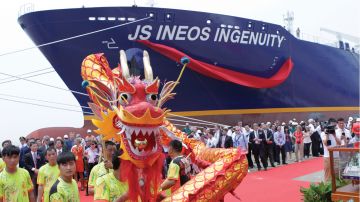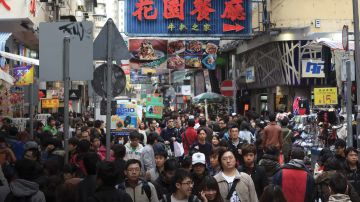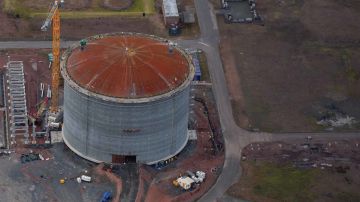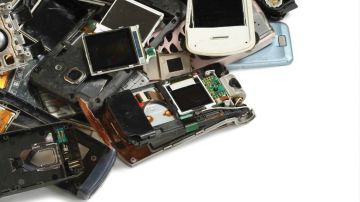Change is the only constant in life. Over the past few decades, though, the pace of change has been alarming. No one is immune and it shows no signs of slowing down…
OVER the past few decades, life in the workplace has undergone possibly the biggest transformation since the industrial revolution which, in itself, led to sweeping changes across the world.
And the speed of change shows no signs of slowing down.
“We won’t experience 100 years of progress in the 21st century, it will be more like 20,000 years of progress,” says Ray Kurzweil, an Americandescribed by Forbes magazine as the ‘ultimate thinkingmachine’.
Advances in technology have revolutionised the world of business.
In 1975, George Pake, then head of research at Xerox, predicted the office of the future.
“There is absolutely no question that there will be a revolution in the office over the next 20 years,” he told Business Week. “What we are doing will change the office like the jet plane revolutionised travel and the way that TV has altered family life.”
He predicted that in 1995 his office would be completely different. A TV-display terminal and keyboard would sit on his desk.
“I’ll be able to call up documents from my files on the screen, or by pressing a button,” he said. “I can get my mail or any messages. I don’t know how much hard copy [printed paper] I’ll want in this world.”
Apart from the paper bit, he was spot on.
Today, though, we now have wireless internet, email, smartphones, virtual video conferencing tools, and social networking sites with clout such as Facebook, Twitter, TripAdvisor and Rotten Tomatoes, all of which have been growing at a phenomenal pace.
People can communicate with those they know – and those they don’t – throughout the world in seconds from their home, their car, their office or while cruising at 25,000ft.
Social media has given power back to people. Companies, which underestimate that power and ignore negative feedback about their products and services, do so at their peril.
“Trust plays a huge part in this new world and customers are more willing to trust a peer or customer review than a company’s claims about its product or service,” said John J. Sviokla, a Principal in PwC’s US Advisory practice where he serves as business leader for strategy and innovation.
But who is driving this change?
Customers are certainly demanding better, faster, cheaper and want to do more with less.
But equally, companies, facing tough competition, are under increasing pressure to innovate.
In 1975 the fastest supercomputer cost $5 million. Today a $400 iPhone would be able to perform equally as well.
Last year an estimated 4.55 billion people owned a mobile phone. That equates to nearly 70% of the world’s population. Those with a smartphone numbered 1.75 billion.
Smartphones now generate almost twice the volume of mobile traffic to that of PCs, tablets and routers – and that is predicted to grow ten-fold by 2019.
To take advantage of today’s changing climate, companies will need vision, tenacity, and, ultimately, the ability to organise, execute and change.
“These qualities are even more important today because the world is more complex now than it was a decade ago,” said Mr Sviokla. “But there are actions that management can take so that they benefit from this rapidly-changing environment, rather than become overwhelmed by it.”
PwC recently interviewed 1,322 chief executives from 77 countries.
Far from overwhelming them, more than half of those questioned saw more opportunities today than three years ago.
“If 2014 taught us anything it’s that, in our increasingly technology-led world, no industry, no company and no government, even, is immune from the effects of change,” said Mr Sviokla.
“ If 2014 taught us anything, it’s that, in our increasingly technology-led world, no industry, no company and no government, even, is immune from the effects of change” John Sviokla, PwC business leader for strategy and innovation
“But even with this rapid pace of change, we’re seeing an underlying sense of optimism from CEOs, despite an increasingly fluid and disrupted business environment.”
Those who survive, and thrive, will, says Mr Sviokla, be the companies which think strategically and actively seek partnerships with a diverse mix of businesses, even their competitors, to gain access to new markets and new technologies.
David Carder, an engagement leader with American consulting firm Kotter International, said it was also important not to overlook ‘the engagement of the heart’ when implementing change.
“Leaders often vastly underestimate the power of engaging people emotionally,” he said. “But that can go a long way towards fuelling the tenacity and stamina needed to withstand the challenges of change and the courage to take on the changes in the first place.”
One way to do that, he said, was to bring the company’s vision to life through stories, video and personal experiences.
That said, he felt many individual business leaders were overwhelmed at the pace of change.
Mr Carder said the way companies were structured was becoming outdated.
“It worked well in the late 19th and early 20th century because it suited the environment at the time,” he said. “But we’re seeing that it’s much less effective now. Today companies need to be agile with network-driven groups of colleagues who can innovate and adapt much more quickly.”
It’s hard to predict what technologies and trends will affect our lives in the future.
But McKinsey’s Global Institute recently had a stab at it.
It identified 12 potential technologies, from robots with enhanced senses to self-driving cars, which could have a massive impact on the global economy between now and 2025.
“The parade of new technologies and scientific breakthroughs is relentless and the list of the ‘next big thing’ grows ever longer,” said a spokesman. “But some technologies do, in fact, have the potential to disrupt the status quo and alter the way people live and work. Business leaders need to understand how the competitive advantages on which they have based their strategy might erode or be enhanced a decade from now by emerging technologies.”
Some technologies detailed in Mckinsey’s report have been in the making for years; others are more surprising.
No one is sure what the Internet of Things will mean for business, where machines will be able to talk to each other, but the effects on society, the economy – on everything – are expected to be huge.
Effectively it is about creating the technology to connect 50 billion devices.
“It’s easy to scoff at the hugeness of the concept but it’s already happening, bit by bit, sector by sector,” said Peter Day, the BBC’s global business correspondent. “Cars are already hugely computerised.”
The 7th Future of Wireless International Conference made its London debut in June.
“The technology revolution has only just started,” said a spokesman for conference organisers
Cambridge Wireless. “As with all revolutions, there will be unexpected changes and new beneficiaries. Existing players and structures may become obsolete or need to adapt radically. But with change comes opportunity as well as challenge.”
Not all, though, see what’s happening as a force for good.
Professor Susan Greenfield, a neuroscientist at Britain’s Oxford University, believes the effect of all this change – and the speed of this change – will affect our brains over the next 100 years in ways we might never have imagined.
“Our brains are under the influence of an ever-expanding world of new technology - multichannel television, video games, the internet, wireless networks, Bluetooth links,” she said. “And the list goes on and on.”
It is a trend that worries her deeply.
“We could be raising a hedonistic generation who live only in the thrill of the computergenerated moment, and are in distinct danger of detaching themselves from what the rest of us would consider the real world,” she said.
In 1909 E M Forster penned a short story entitled The Machine Stops, an apocalyptic view of a future dominated by computers.
“Anybody who uses the Internet should read it,” said Paul Rajlich, a research programmer at the National Center for Supercomputing Applications in Illinois, America.
“It is a chilling, short story masterpiece about the role of technology in our lives, and it is as relevant today as the day it was published.”
Whatever the future holds the pace and scope of change is guaranteed to be beyond our wildest dreams.
















